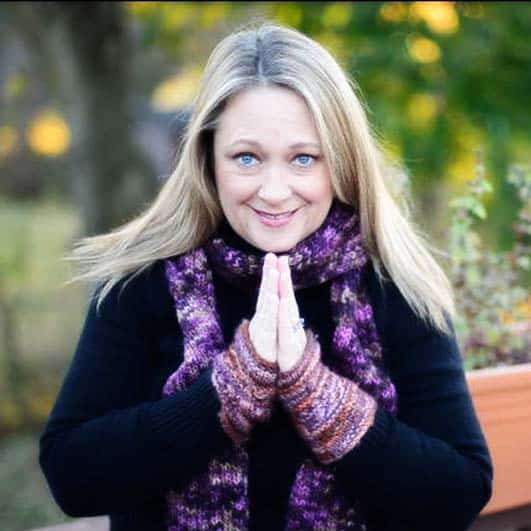The Following is a Brief Excerpt from the Grief Book: Mindfulness & Grief.
My meditation students often ask me if I am naturally calm. The answer is “no.” I discovered the practice of yoga and mindfulness meditation on orders from my nurse practitioner after being diagnosed with the stress-related illness shingles. “You need to do something about your stress,” she said. “It’s making you sick. Try yoga.” I took her advice, sold my web development business, and after a few years of practicing yoga and meditation under the guidance of a wonderful group of teachers, I earned my certification as a Phoenix Rising Yoga Therapy practitioner and mindfulness meditation instructor.
The better I got to know myself through mindfulness practice, the more I knew I wanted to help others reduce their suffering, so I volunteered as a call specialist on a suicide prevention hotline. My uncle Doug died by suicide when I was seven. I had felt close to him and was surprised by his death—surprised that someone I loved would kill themselves. My natural reaction was to try to make sense of it all. As a preteen I rummaged through my grandmother’s insurance files, found police reports, read books on suicide, and tried to learn everything I could about my uncle’s final days. As an adult, I was able to make use of that energy by helping others on the hotline. I would certainly rather have my uncle back, but given that I cannot change what happened, my ability to make meaning out of the loss by helping others has been incredibly rewarding.
I developed an eight-week Mindfulness and Grief program for my private practice while I earned my Master’s degree in Thanatology (the study of death, dying, and bereavement) from Hood College in Maryland. Participants in my program have included people whose loved ones died from cancer, suicide, heart attacks, overdoses, car accidents, and murder.
I am often asked how I can bear to witness this kind of pain regularly. My answer is simple: I get to see the pain of loss change people in miraculously positive ways. Over and over again I watch people transform from complete hopelessness into the positive states of mind called the Four Brahma-Viharas: loving-kindness, compassion, sympathetic joy, and equanimity. This does not happen overnight, but it does happen, and I count myself privileged to be part of that process.
What is mindfulness?
Simply put, mindfulness is the art of using your senses to be fully awake in the present moment. You may have noticed that most of your stress comes from worrying about the past or fearing the future. For many of us, nothing provokes this response more than grief.
Few of us are taught how to cope with day-to-day stress, much less grief. Fortunately, anyone can learn how to turn the stress switch to “off,” even during the most troubling of times. You do not need to be a Buddhist, have a background in mindfulness meditation or yoga, be physically fit, or subscribe to any particular set of spiritual beliefs to benefit from mindfulness.
The only thing you need to approach your grief mindfully is yourself—just as you are, right now. The fact that you are reading this book shows that you have hope for your own ability to weather this storm. You will learn how mindfulness-based techniques can:
- Ease the physical symptoms of grief
- Calm your mind and help you to regulate difficult emotions
- Improve your awareness of the present moment
- Increase your compassion toward yourself and others
- Help you to make meaning from your loss
- Develop your new self-narrative for moving forward.

